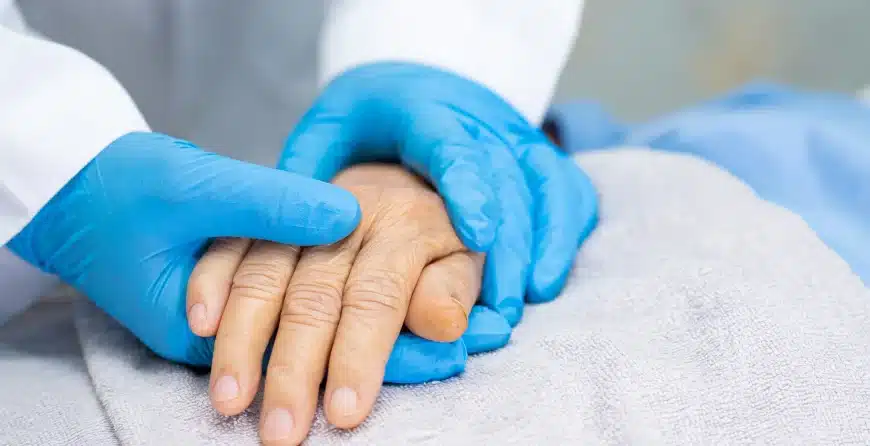10 farmers died from outbreak
Melioidosis hits Buri Ram, Nakhon Ratchasima and Songkhla
The Department of Disease Control (DDC) has warned farmers about a new outbreak of melioidosis which has killed around 10 farmers in Buri Ram, Nakhon Ratchasima and Songkhla.
Melioidosis, also called Whitmore’s disease, is a bacterial infectious disease caused by a fungus called Burkholderia pseudomallei or B. pseudomallei that is normally detected in contaminated soil, water, rice paddles, and cropping farms.
Meliodosis is now in its spring outbreak and is causing concern among medical offices.
Dr Taweechai Wisanuyothin, chief of the DDC Office 9, said on Saturday that 582 cases of the disease have been found this year in four lower northeastern provinces overseen by the office: Buri Ram (336 cases), Nakhon Ratchasima (93), Surin (106) and Chaiyaphum (47). Six of those — four in Buri Ram and two in Nakhon Ratchasima — died of the disease.
Dr Taweechai said that 53.78% of those infected were farmers, 25.88% were employees, and 6.87% were children. Most of the infected patients were at least 65 years old; the others were 55–64 and 45–54 years old, respectively.
Dr Decha Sae-Lee, director of Thepha Hospital in Songkhla, said that five out of seven melioidosis cases detected in Thepha district have died from the disease since April, considered the highest among the lower southern region provinces. Four of those had diabetes before the disease.
This year was the first in a while that locals have died from melioidosis, he said, adding that at least two cases of melioidosis were found in a typical year in the past, but with no fatalities.
According to the Centre for Disease Control (CDC), melioidosis can infect both humans and animals through direct contact with a contaminated source.
Dr Taweechai said humans can be infected by touching soil and water, consuming them, or even breathing in the fungi.
Symptoms of the disease will be displayed 1–21 days after receiving the bacteria, depending on the antibody levels present in the body. Symptoms of the disease include high fevers, abscesses and respiratory infections.
He suggested people, especially farmers, should avoid wading through water or mud, wear boots, plastic shoe protectors, and drink fully sterilised water. They should seek immediate treatment if they have a sudden symptoms and call the CDC hotline at 1422 for further information.
Melioidosis, also called Whitmore’s disease, is a bacterial infectious disease caused by a fungus called Burkholderia pseudomallei or B. pseudomallei that is normally detected in contaminated soil, water, rice paddles, and cropping farms.
Meliodosis is now in its spring outbreak and is causing concern among medical offices.
Dr Taweechai Wisanuyothin, chief of the DDC Office 9, said on Saturday that 582 cases of the disease have been found this year in four lower northeastern provinces overseen by the office: Buri Ram (336 cases), Nakhon Ratchasima (93), Surin (106) and Chaiyaphum (47). Six of those — four in Buri Ram and two in Nakhon Ratchasima — died of the disease.
Dr Taweechai said that 53.78% of those infected were farmers, 25.88% were employees, and 6.87% were children. Most of the infected patients were at least 65 years old; the others were 55–64 and 45–54 years old, respectively.
Dr Decha Sae-Lee, director of Thepha Hospital in Songkhla, said that five out of seven melioidosis cases detected in Thepha district have died from the disease since April, considered the highest among the lower southern region provinces. Four of those had diabetes before the disease.
This year was the first in a while that locals have died from melioidosis, he said, adding that at least two cases of melioidosis were found in a typical year in the past, but with no fatalities.
According to the Centre for Disease Control (CDC), melioidosis can infect both humans and animals through direct contact with a contaminated source.
Dr Taweechai said humans can be infected by touching soil and water, consuming them, or even breathing in the fungi.
Symptoms of the disease will be displayed 1–21 days after receiving the bacteria, depending on the antibody levels present in the body. Symptoms of the disease include high fevers, abscesses and respiratory infections.
He suggested people, especially farmers, should avoid wading through water or mud, wear boots, plastic shoe protectors, and drink fully sterilised water. They should seek immediate treatment if they have a sudden symptoms and call the CDC hotline at 1422 for further information.










